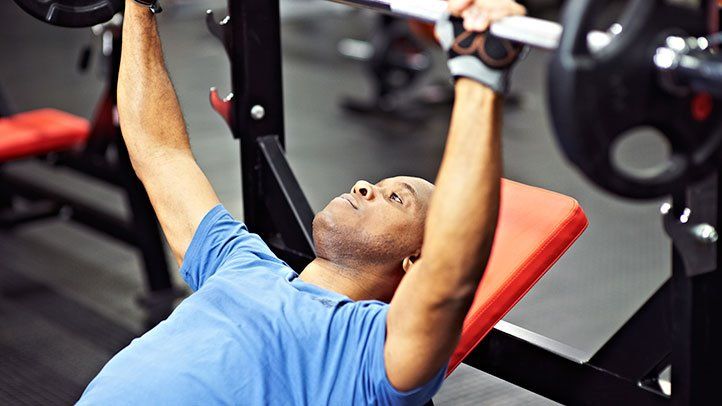New guidelines for physical activity suggest that we should be moving more all day.
How much exercise is necessary to feel healthier and live longer? The answer for most Americans is simple: More than what you’re doing now.
According to the U.S., four out of five people need to be more active, and more than 25% of adults don’t exercise at all—Department of Health and Human Services. Being a couch potato can have a significant impact on your health. A study published in January 2015 in Advance in Cardiovascular Diseases found that exercise alone is responsible for $117 billion in additional healthcare costs yearly.
Good news! The updated HHS physical activity recommendations for Americans, published in the Journal of the American Medical Association (JAMA) on November 20, make achieving the recommended fitness goals more accessible than the previous guidelines.
HHS’s Physical Activities Guidelines Advisory Committee, a group of internationally recognized exercise and physical activity experts, reviewed the most recent science to update the 2008 guidelines. The new recommendations were made based on the quality and consistency of research in various exercise areas and their relationship to health.
Many recommendations were the same, including the recommended intensity and frequency of exercise. The new offers state that adults should continue to exercise 150-300 minutes at moderate intensity or 75-150 minutes of vigorous aerobic activity every week. They should also perform strength training exercises two to five days a week.
The guidelines now offer recommendations for children younger than five, emphasizing the importance and benefits of active play and physical activity in growth and development.
Adults need to change the time it takes to exercise significantly. The previous guidelines required an exercise session to last at least 10 minutes. The updated procedures allow for shorter periods of activity, even a few minutes, to count towards the time you have exercised. The authors of JAMA wrote that “these small changes can contribute towards increasing health-enhancing activities.”
“The update is very consequential,” said Haitham Ahmed (M.D.), a preventive cardiologist at Cleveland Clinic in Ohio, who was not involved with drafting the recommendations. He says that data is showing that even small amounts of exercise can be better than none.
Even a short walk or a quick climb up the stairs can increase your steps and add aerobic exercise to your day. Dr. Ahmed says this has enormous benefits in the long term.
According to the Centers for Disease Control and Prevention, 1 out of 10 deaths in early life is due to inactivity. Exercise has health benefits for just about every organ in your body. It can also help reduce or prevent the risk of many chronic conditions, such as:
- Heart disease
- Hypertension
- Type 2 diabetes
- Cancers of the bladder, breast and colon, colon, endometrium, the lining of the uterus, esophagus (lining of the stomach), kidney, lung, and stomach
- Depression
- Anxiety
- Dementia
These are the key takeaways from the recommendations for physical activity.
These points are highlighted in the HHS’s new recommendations for physical activity:
- Sit less and move more.
- Even modest increases in activity can benefit those who are not active enough.
- Children between 3 and 5 years old should be active during the day.
- Children and teens between the ages of 6-17 should engage in moderate to vigorous exercise daily.
- Adults should engage in 150-300 minutes of moderate-intensity exercise, 75-150 minutes of vigorous-intensity aerobic exercises, or a combination of both.
- Adults should exercise two to three times a week.
- Balance training should be incorporated into the exercise routines of older adults (65 and over).
Brisk walking 2.5 to 4 miles an hour is one example of moderate-intensity physical activity. Another example is raking the yard. Vigorous activities include running, carrying heavy groceries, or participating in an intense fitness class.
One way to find out what kind of activity you are engaging in is the “talk test.” According to the JAMA report, moderate exercise is defined as being able to talk while exercising. You are considered vigorous-intensity if you can say no more than a few words before stopping and taking a deep breath.
Health experts urge you to move more and sit less — all day.
Richard P. Troiano, Ph.D., a U.S. Public Health Service captain and coauthor of the new recommendations, said that removing the 10-minute bout criteria in the latest report is intended to encourage people to move more and, therefore, sit less.
Time is one of the most significant barriers to physical activity. Dr. Troiano says that some of the suggestions to increase activity in daily life, such as parking further away or taking the stairs, needed to be more consistent with the bout criteria. He says, “The message is now clear that any moderate- or vigorously intense activity — even short — is beneficial.”
Related: Is Stair climbing the ideal exercise for all postmenopausal women?
These guidelines encourage people to do as many as possible, even if it doesn’t result in them reaching the recommended exercise levels, according to Kerry Stewart, a professor in medicine in cardiology and director of clinical/research physiology at Johns Hopkins Medicine, Baltimore. Stewart was not involved in the writing of these recommendations.
He says, “These guidelines suggest that getting up and moving is beneficial even if it’s only for 5 or 15 minutes.” It’s essential to only sit for a short time without moving.
Do you need help determining where to begin? Dr. Ahmed suggests that you go for a walk. Dr. Ahmed says that walking is his favorite exercise. It’s easy to do anywhere and requires little equipment. He says that if you walk fast, it can increase your heart rate and increase your aerobic zone.


